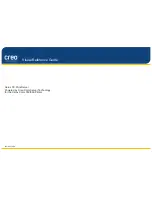
Configuring Your Server 4-29
RAID CONFIGURATION
This section describes how to use the internal hard disk drives in the disk array RAID configuration.
To use an external hard disk drive in a disk array, the optional disk array controller and the
additional disk drive are necessary. Refer to the manual of the optional disk array controller or
additional external disk drive for details.
To configure the internal hard disk drives as the disk array drive:
For SCSI model, configure the three SCSI hard disk drives by using the onboard RAID
controller.
For SATA model, configure the two SATA hard disk drives by using the onboard RAID
controller.
Configure the hard disk drives by using the optional disk array controller.
RAID Configuration of SCSI Hard Disk Drive
You can configure a disk array (RAID0 or RAID1) by using the onboard RAID controller of the
server.
You need up to three SCSI hard disk drives for configuration.
RAID0 (striping)
Stores data on two hard disk drives by dividing it (striping). Both hard disk drives can be
accessed at the same time. This improves disk access performance compared with using a
single hard disk drive.
IMPORTANT:
RAID0 does not have data redundancy. When a hard disk drive
failure occurs, data cannot be restored.
Logical capacity of the array becomes a multiple of the connected
hard disk drive.
RAID1 (mirroring)
Stores the data being saved to one hard disk dive to another hard disk drive. This method
is called "mirroring." When storing data onto one hard disk drive, the same data is
simultaneously stored onto another hard disk drive. When a hard disk drive becomes
faulty, the one with the same data can be used. This provides operation without the system
going down.
IMPORTANT:
RAID1 reads or writes data to/from the two hard disk drives at the
same time. The disk access performance is lower than the single
disk.
Logical capacity of the array is equal to one hard disk drive
connected.
Summary of Contents for Express5800/120Rf-1
Page 32: ...1 16 Notes on Using Your Server This page is intentionally left blank ...
Page 154: ...4 58 Configuring Your Server This page is intentionally left blank ...
Page 236: ...6 26 Installing and Using Utilities This page is intentionally left blank ...
Page 248: ...7 12 Maintenance This page is intentionally left blank ...
Page 348: ...C 2 IRQ This page is intentionally left blank ...
Page 408: ...G 4 Product Configuration Record Table This page is intentionally left blank ...
















































